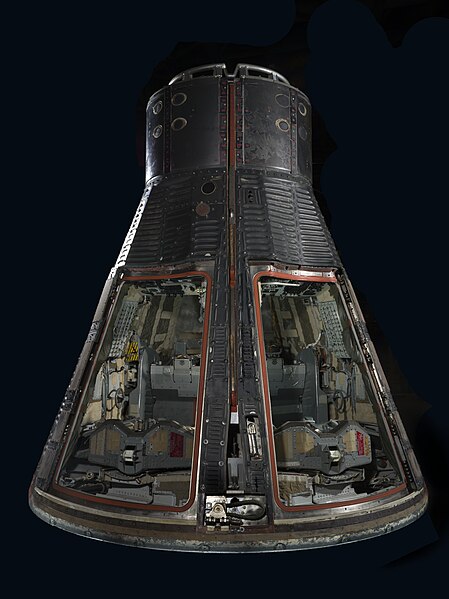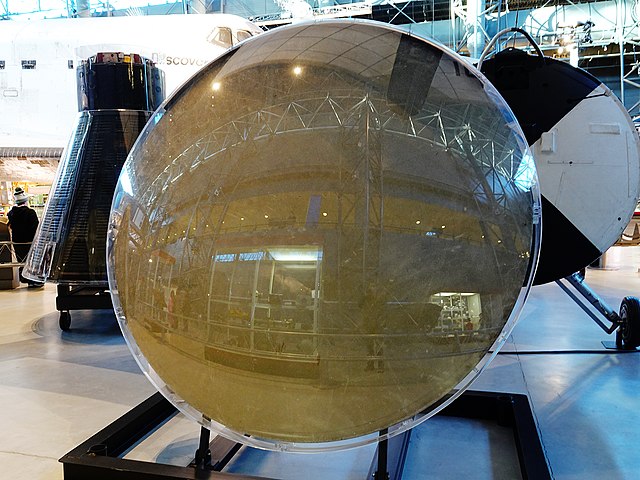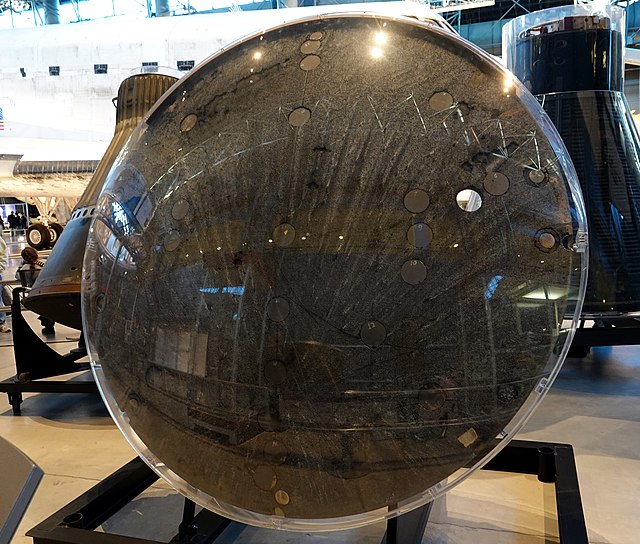Gemini 6A was a 1965 crewed United States spaceflight in NASA's Gemini program.
The mission, flown by Wally Schirra and Thomas P. Stafford, achieved the first crewed rendezvous with another spacecraft, its sister Gemini 7. Although the Soviet Union had twice previously launched simultaneous pairs of Vostok spacecraft, these established radio contact with each other, but they had no ability to adjust their orbits in order to rendezvous and came no closer than several kilometers of each other, while the Gemini 6 and 7 spacecraft came as close as one foot (30 cm) and could have docked had they been so equipped.
Gemini VI-A (foreground) and Gemini VII make the first rendezvous in orbit between two crewed spacecraft
(L-R) Stafford, SchirraProject Gemini← Gemini 7Gemini 8 →
Stafford and Schirra before the pre-launch countdown
The Atlas-Agena launches the Agena Target Vehicle for the intended Gemini 6 rendezvous mission, attempted October 25, 1965 but fails.
Project Gemini was the second United States human spaceflight program to fly. Conducted after the first American manned space program, Project Mercury, while the Apollo program was still in early development, Gemini was conceived in 1961 and concluded in 1966. The Gemini spacecraft carried a two-astronaut crew. Ten Gemini crews and 16 individual astronauts flew low Earth orbit (LEO) missions during 1965 and 1966.
A cutaway illustration of the Gemini spacecraft. The Adapter module in white, the Reentry module in grey
Gemini VII Capsule
Unablated Gemini heat shield
Ablated Gemini heat shield








